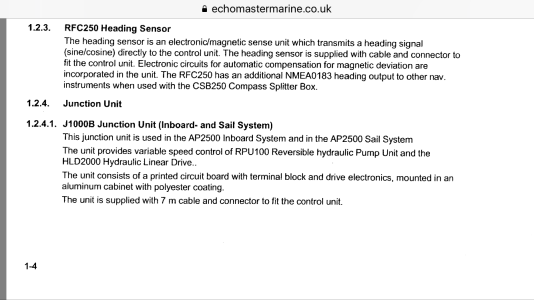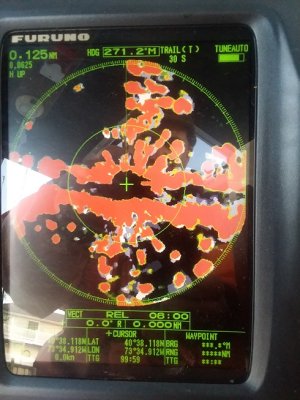I have just installed a new Furuno GP-39 GPS and 1815 RADAR. I have been trying to figure out the NEMA wiring connection from the GPS to the RADAR.
Right now, I have the GPS Blue wire connected to the RADAR Grey with one Red dot wire. The GPS White wire is connected to the Grey with one Black dot wire. On my RADAR display I have the correct position and speed for "OWN SHIP" and, if I have a waypoint entered into the GPS, BRG, RNG and TTG to that waypoint.
My heading still reads all asterisks, as does my cursor position. According to my GP-39 manual I should be getting an output that includs COG (course over ground). That seems an ideal heading input. I am getting SOG (speed over ground) so I must assume that I have the wiring almost correct.
Can someone help me with the rest of the wiring? I have three NEMA inputs on the RADAR and a total of 4 wires from the GPS (I have not connected the Green or Yellow wires to anything.) Do I need something else for heading input and how must it be connected.
Thank you.
Right now, I have the GPS Blue wire connected to the RADAR Grey with one Red dot wire. The GPS White wire is connected to the Grey with one Black dot wire. On my RADAR display I have the correct position and speed for "OWN SHIP" and, if I have a waypoint entered into the GPS, BRG, RNG and TTG to that waypoint.
My heading still reads all asterisks, as does my cursor position. According to my GP-39 manual I should be getting an output that includs COG (course over ground). That seems an ideal heading input. I am getting SOG (speed over ground) so I must assume that I have the wiring almost correct.
Can someone help me with the rest of the wiring? I have three NEMA inputs on the RADAR and a total of 4 wires from the GPS (I have not connected the Green or Yellow wires to anything.) Do I need something else for heading input and how must it be connected.
Thank you.






